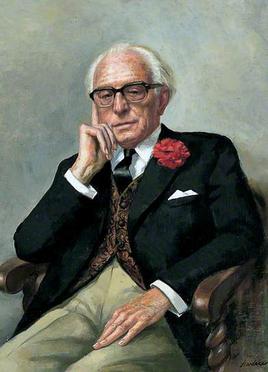Related Research Articles

Swansea is a coastal city and the second-largest city of Wales. It forms a principal area, officially known as the City and County of Swansea.

Swansea University is a public research university located in Swansea, Wales, United Kingdom. It was chartered as University College of Swansea in 1920, as the fourth college of the University of Wales. In 1996, it changed its name to the University of Wales Swansea following structural changes within the University of Wales. The title of Swansea University was formally adopted on 1 September 2007 when the University of Wales became a non-membership confederal institution and the former members became universities in their own right.
The post of Archbishop of Wales was created in 1920 when the Church in Wales was separated from the Church of England and disestablished. The four historic Welsh dioceses had previously formed part of the Province of Canterbury, and so came under its Archbishop. The new Church became the Welsh province of the Anglican Communion.

William Francis Grimes was a Welsh archaeologist. He devoted his career to the archaeology of London and the prehistory of Wales. He was appointed a CBE in 1955.

Haydn Tanner was a Welsh international rugby union player who represented both Wales and the British and Irish Lions. At club level he played for several top-flight teams, including Bristol, Cardiff, Swansea, London Welsh and the Barbarians.

Ashley Errol Williams is a British - Welsh former professional footballer who played as a centre-back.

St Helen's Rugby and Cricket Ground, commonly known simply as St Helens Ground, is a sports venue in Swansea, Wales, owned and operated by the City and County of Swansea Council. Used mainly for rugby union and cricket, it has been the home ground of Swansea RFC and Swansea Cricket Club since it opened in 1873.
Swansea District before 1885 also known as Swansea District of Boroughs was a borough constituency. It was represented in the House of Commons of the Parliament of the United Kingdom. It elected one Member of Parliament (MP) by the first past the post system of election.

John Viriamu Jones, FRS, was a Welsh scientist, who worked on measuring the ohm, and an educationalist who was instrumental in establishing the University of Sheffield and Cardiff University.

Neil John Taylor is a Welsh former professional footballer who played as a left-back.
Colonel Philip Jones was a Welsh military leader and politician who sat in the House of Commons between 1650 and 1656. He rose to the rank of Colonel in the service of the Parliamentary Army under Fairfax during the English Civil War. As Governor of Swansea he successfully held the town against the Royalist forces.
The 1910 Five Nations Championship was the first series of the rugby union Five Nations Championship following the inclusion of France into the Home Nations Championship. Including the previous Home Nations Championships, this was the twenty-eighth series of the annual northern hemisphere rugby union championship. Ten matches were played between 1 January and 28 March. It was contested by England, France, Ireland, Scotland and Wales.
The 1907 Home Nations Championship was the twenty-fifth series of the rugby union Home Nations Championship. Six matches were played between 12 January and 16 March. It was contested by England, Ireland, Scotland and Wales.
The 1909 Home Nations Championship was the twenty-seventh series of the rugby union Home Nations Championship. Six matches were played between 16 January and 20 March. It was contested by England, Ireland, Scotland and Wales.
The 1914 Five Nations Championship was the fifth series of the rugby union Five Nations Championship following the inclusion of France into the Home Nations Championship. Including the previous Home Nations Championships, this was the thirty-second series of the annual northern hemisphere rugby union championship. Nine matches were played between 1 January and 13 April. It was contested by England, France, Ireland, Scotland and Wales.
T. Williams was a rugby union forward who played club rugby for Swansea and London Welsh and played international rugby for Wales. Very little is known of Williams and he is often confused with his contemporary Tom Williams who also played for Wales around the same period, and who also had connections with London Welsh.

The University of Wales Trinity Saint David is a multi-campus university with three main campuses in South West Wales, in Carmarthen, Lampeter and Swansea, a fourth campus in London, England, and learning centres in Cardiff, Wales, and Birmingham, England.

Audrey Williams was a Welsh archaeologist. She was the first woman president of the Royal Institution of South Wales (RISW) and a Fellow of the Society of Antiquaries. She worked on several notable excavations during the mid-20th century in Wales, London and south-east England, including the Gower Peninsula, Verulamium and the Temple of Mithras in London.
Sir Robert Hughes Williams,, commonly known as Robin Williams, is a Welsh physicist and academic, specialising in solid state physics and semiconductors. He was Vice-Chancellor of University of Wales, Swansea from 1994 to 2003. He had taught at the New University of Ulster and University of Wales, College of Cardiff, before joining Swansea.
References
- ↑ Crockfords 1967/8 p1351: London, OUP, 1955)
- 1 2 "SUPPLEMENT TO THE LONDON GAZETTE" (PDF). 1 January 1946. Retrieved 11 April 2020.